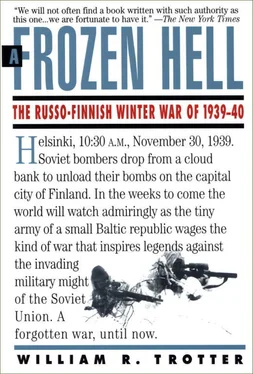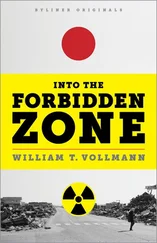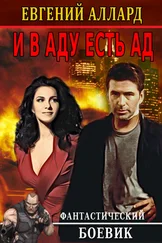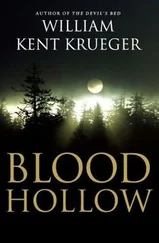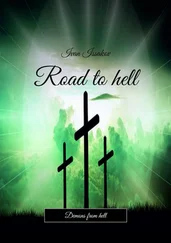William Trotter - A Frozen Hell
Здесь есть возможность читать онлайн «William Trotter - A Frozen Hell» весь текст электронной книги совершенно бесплатно (целиком полную версию без сокращений). В некоторых случаях можно слушать аудио, скачать через торрент в формате fb2 и присутствует краткое содержание. Город: Chapel Hill, Год выпуска: 2000, ISBN: 2000, Издательство: Algonquin Books of Chapel Hill, Жанр: military_history, История, на английском языке. Описание произведения, (предисловие) а так же отзывы посетителей доступны на портале библиотеки ЛибКат.
- Название:A Frozen Hell
- Автор:
- Издательство:Algonquin Books of Chapel Hill
- Жанр:
- Год:2000
- Город:Chapel Hill
- ISBN:978-1565122499
- Рейтинг книги:3 / 5. Голосов: 1
-
Избранное:Добавить в избранное
- Отзывы:
-
Ваша оценка:
- 60
- 1
- 2
- 3
- 4
- 5
A Frozen Hell: краткое содержание, описание и аннотация
Предлагаем к чтению аннотацию, описание, краткое содержание или предисловие (зависит от того, что написал сам автор книги «A Frozen Hell»). Если вы не нашли необходимую информацию о книге — напишите в комментариях, мы постараемся отыскать её.
A Frozen Hell — читать онлайн бесплатно полную книгу (весь текст) целиком
Ниже представлен текст книги, разбитый по страницам. Система сохранения места последней прочитанной страницы, позволяет с удобством читать онлайн бесплатно книгу «A Frozen Hell», без необходимости каждый раз заново искать на чём Вы остановились. Поставьте закладку, и сможете в любой момент перейти на страницу, на которой закончили чтение.
Интервал:
Закладка:
William R. Trotter
A FROZEN HELL
The Russo-Finnish Winter War of 1939–1940
To the memory of Colonel J. N. Pease, whose faith never wavered
ACKNOWLEDGMENTS
This book began as a research project for a seminar course in Russian history at Davidson College, in 1962–63, and continued as a thesis for a junior-year-abroad program sponsored by the Scandinavian Seminar. Ten drafts and twenty-four years later, the metamorphosis is complete, and my thanks are due to the following people who helped along the way: Mr. and Mrs. Craig Gaskell, for making it possible for me to spend a year in Finland; Dr. A. I. Lobanov-Rostovsky, warrior, scholar, and prince of the Romanov family, for his early encouragement; the late Dr. Halfdan Gregerson, of the Scandinavian Seminar; Mrs. Gunnel Wrede (affectionately known, by members of the Tuborg Gang, as “The Baroness”); my cohorts in the Tuborg Gang—Ray Myhre, Sara Evans, and Fay Tobias; Mr. Brad Absetz of Viitakivi College, Hauho, Finland, for his valuable aid as a translator and go-between; Mr. and Mrs. Jorma Reinimaa; Reserve Colonel E. Kuusaari, editor of Kansa Taisteli ; Eino Nurmio, who was patient and unbelievably helpful during several long months of translation and who became an esteemed friend in the process; Väinö Linna, author of Finland’s greatest war novel, The Unknown Soldier , who made me welcome in his home and gave valuable insight into the psychology of the Finnish GI; Eila Pekkanen, whose friendship remains a bright and beautiful memory even now; Erkka Maula, poet, philosopher, and sauna-freak, in honor of the hedgehog in the moonlight, the spiritus fortis , and the cause of “continual progress”; Dr. Louis D. Rubin, whose tough, expert editing made this book finally grow up; and the late Jean Sibelius, whose music ignited my lifelong love affair with the Finnish landscape: all else flowed from that.
AUTHOR’S NOTE
Place-names in Finnish are quite literal, most often constructed with a suffix that is also a noun, describing exactly what sort of terrain feature is involved. The following place-suffixes are common in this book, and a quick glance at them may help the reader visualize what some of these strange names actually stand for.
-järvi: lake
-joki: river
-lahti: bay
-niemi: cape
-ranta: beach
-saari: island
-suo: marsh
-vaara: ridge
The Finnish ä is pronounced like the a in apple .
The abbreviation JR stands for the Finnish term jalkaväki rykmentti , which means “infantry regiment”; 2/JR-16 is the designation for the Second Battalion, Sixteenth Regiment.
PART I
Onslaught and Riposte
When Stalin says “dance,” a wise man dances.
—Nikita S. Khrushchev, in Khrushchev RemembersCHAPTER 1
The Reasons Why
At the easternmost end of the Baltic Sea, between the Gulf of Finland and the vastness of Lake Ladoga, lies the rugged, narrow Karelian Isthmus. Although the land is sternly beautiful—cut laterally by numerous clear blue lakes, tapestried with evergreen forest, and textured by outcroppings of reddish gray granite—it has little intrinsic worth. The soil grows few crops, and those grudgingly, and the scant mineral resources are hardly worth the labor of extraction. Yet there are few comparably small areas of land in all Europe that have been fought over so often and so stubbornly.
The reason is geographic. Since the beginning of European history the Karelian Isthmus has served as a land bridge between the great eastward mass of Russia and Asia and the immense Scandinavian peninsula that opens to the west. The Isthmus has been a highway for tribal migrations, a conduit for trade and cultural exchange, and a springboard for conquest. Armies have washed across it—Mongol, Teutonic, Swedish, Russian—and empires have coveted it, either as a defensive breakwater or a sally port for aggression.
An unopposed army, for example, driving eastward across the Karelian Isthmus from the point where it widens into the Finnish mainland, would be at the city limits of Leningrad in a matter of hours. That is precisely the reason why, in the waning days of 1939, the world’s largest military power launched a colossal attack against one of the world’s smallest nations. Soviet Russia against little Finland—history affords few examples of a conflict so overwhelmingly one-sided. And yet, for more than 100 days, Finland waged a David-and-Goliath defensive struggle of unequaled valor and determination, a backs-to-the-wall stand that stirred the hearts of freedom-loving people everywhere and that enabled Finland, though ultimately and inevitably defeated, to remain a free and sovereign nation.
Conflict between Russia and Finland became inevitable in May 1703, when Peter the Great selected a swampy, bug-infested river delta at the eastern tip of the Baltic Sea and proclaimed it the site of his new capital, St. Petersburg—his long-sought “window to the West.” The fact that the land he had chosen, as well as all of Finland to the west of that point, belonged to Sweden did not deter the tsar at all. The annexation of the River Neva delta was just one more move in the power struggle being waged between the Romanov dynasty and the Swedish monarchy; the prize was domination of the Baltic and, with it, lucrative trade routes to the West.
More than 100,000 Russians died during the ten years required to drain the malarial swamps and drive the pilings on which Peter’s grand city would rise. Some 236 years later, another quarter-million or so Russians, along with 25,000 Finns, would die, just because the Finnish border ran so close to that same city, now called Leningrad.
Both Russia and Sweden used Finland as a convenient battleground, much to the harm of its peaceful and bucolic inhabitants. And until Peter finally bested the Swedes, there was always a danger that Sweden might successfully attack St. Petersburg across the narrow Karelian Isthmus. “The ladies of St. Petersburg could not sleep peacefully as long as the Finnish border ran so close,” Peter would later write. In order to ensure the ladies’ rest, he forcibly moved the border back by conquering Viipuri, the main Swedish port on the Isthmus, along with a vast stretch of mainland Karelia.
The rest of Finland remained under Swedish suzerainty until 1809, when the entire country was ceded to Russia as a function of the general reshuffling of European boundaries that attended the Napoleonic Wars. The Swedish yoke had been both loose and benign: during much of the time that Finland was a Swedish province, its citizens enjoyed religious tolerance, freedom from censorship, and as many political rights as the citizens of most European states. All things considered, if one had to be ruled by an outside power, Sweden was not a bad choice.
After he had inherited Finland, Tsar Alexander I also left the Finns to their own devices by and large, permitting them to have autonomous schools, banks, and legal institutions. Finnish citizens who wished to advance their personal careers, or to sample a more cosmopolitan life-style than what was available locally, were able freely to enter the tsarist armed forces or climb the ladder in the vast Russian civil bureaucracy. Military service for the tsars was a favorite route for ambitious young Finns: from 1810 to the revolution of 1917, Finland supplied more than 400 generals and admirals for the Imperial forces, not the least of whom was a hero of the Russo-Japanese War of 1904–1905 named Gustav Mannerheim.
A series of repressive and heavy-handed tsars, however, ignited the nascent fires of Finnish nationalism. All traces of the former easygoing relationship between the two nations vanished when the stubborn and reactionary Nicholas II assumed the Romanov throne in 1894. Nicholas appointed as governor-general of Finland a genuinely loathsome man named Bobrikov, who quashed any manifestation of Finnish nationalism with a ruthless hand. For the first time, Finns could be conscripted unwillingly into the tsarist army; strict censorship placed a boot on the neck of Finland’s ardent class of artists and intellectuals, including the young firebrand composer Jean Sibelius, whose early tone poem Finlandia roused its audiences to a delirium of patriotic fervor. In 1904, to the surprise of no one, a young civil servant ran up to Bobrikov on the steps of the Senate building in Helsinki and shot him dead. Finns everywhere applauded the deed, but the immediate result was increased repression and a much greater involvement in all levels of Finnish affairs by the tsar’s secret police.
Читать дальшеИнтервал:
Закладка:
Похожие книги на «A Frozen Hell»
Представляем Вашему вниманию похожие книги на «A Frozen Hell» списком для выбора. Мы отобрали схожую по названию и смыслу литературу в надежде предоставить читателям больше вариантов отыскать новые, интересные, ещё непрочитанные произведения.
Обсуждение, отзывы о книге «A Frozen Hell» и просто собственные мнения читателей. Оставьте ваши комментарии, напишите, что Вы думаете о произведении, его смысле или главных героях. Укажите что конкретно понравилось, а что нет, и почему Вы так считаете.
